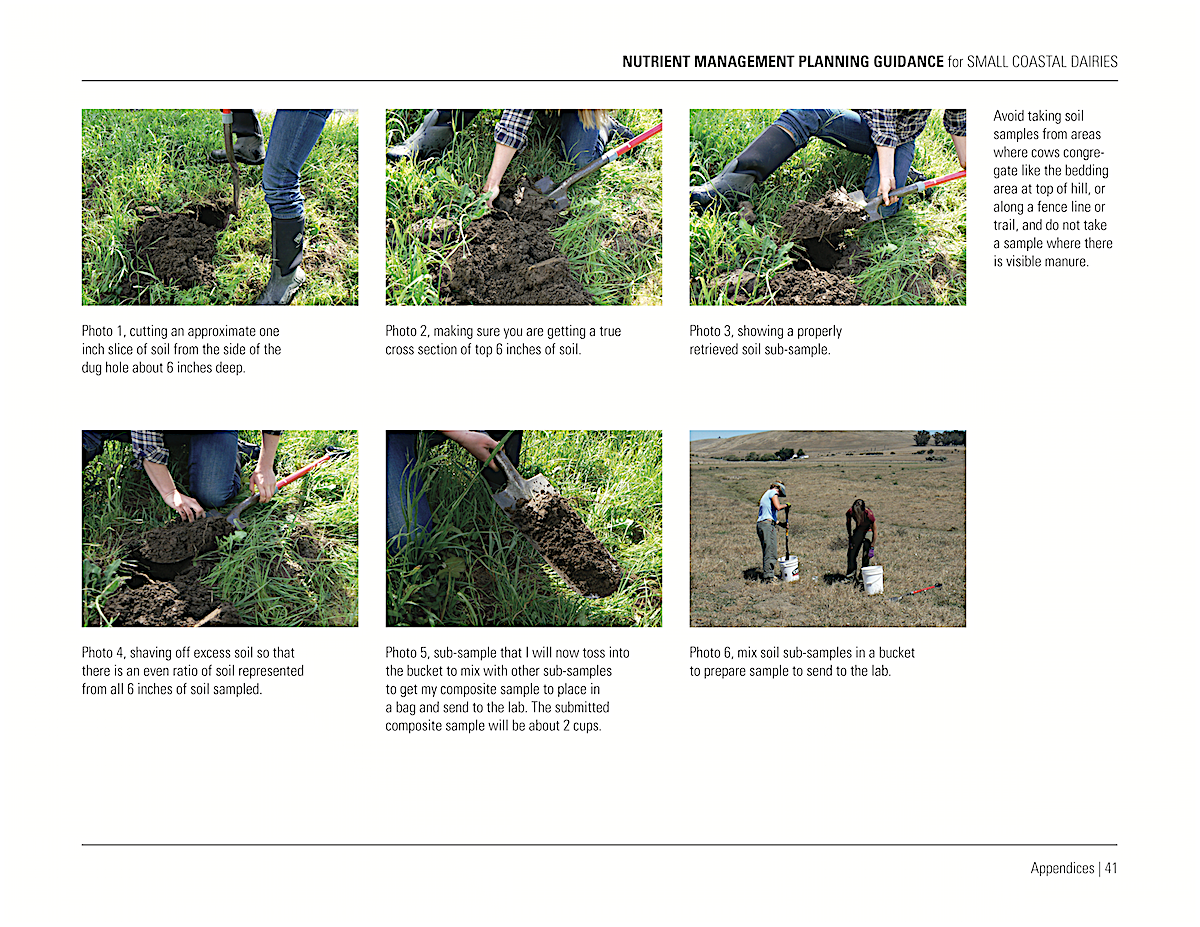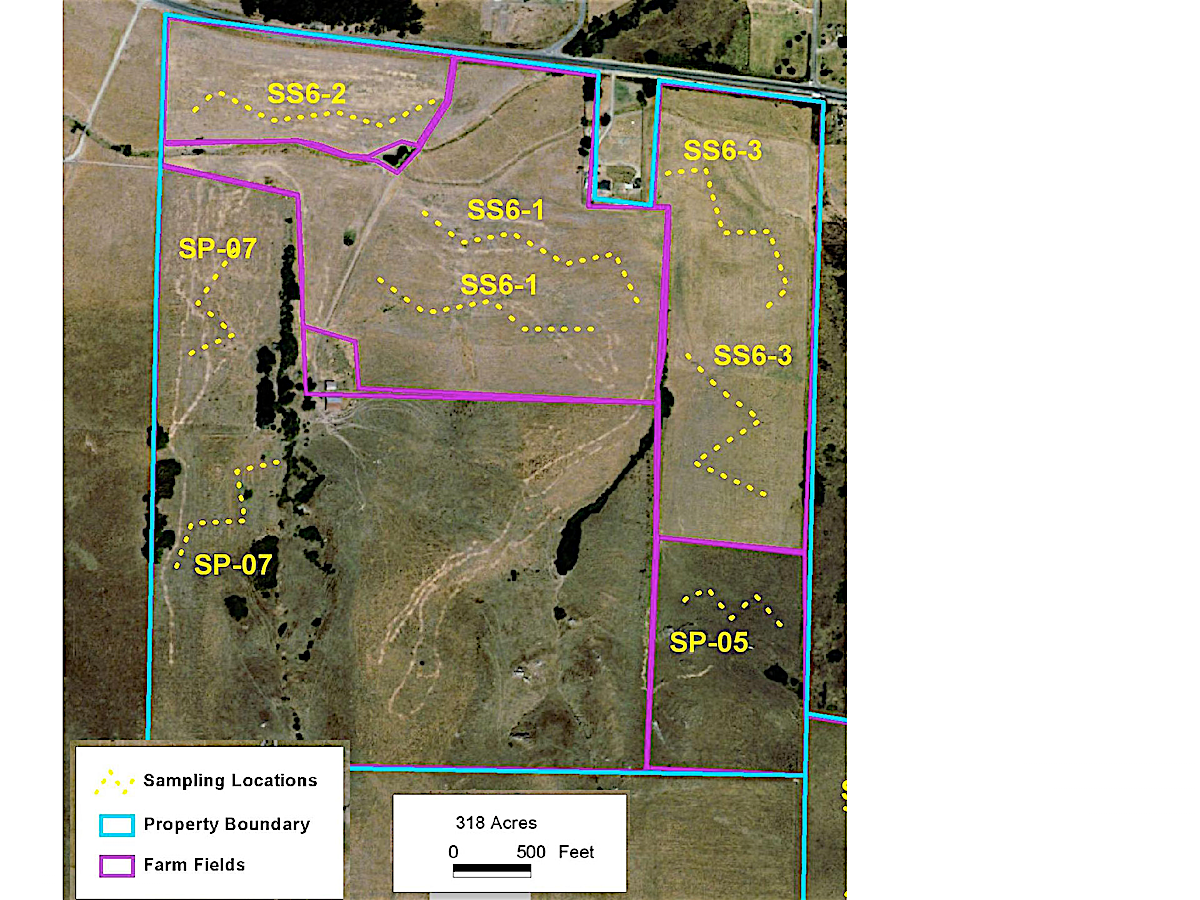Soil & Manure Sampling
Soil Sampling
The key to effective soil sampling is getting a representative sample from each pasture or silage field. The best way to begin is with a soils map of your property. See below for online mapping resources. Once you have obtained the spatial information, pasture and silage field boundaries should be drawn on the map and given a field code. Some fields will contain more than one soil type, and some soil types will cover more than one field. If more than one soil type dominates large areas of an individual field, you may want to treat it as two fields, collecting and submitting samples for each. Soil texture affects nutrient reserves in soil. When you receive your soil analysis report, make sure to refer back to your soils map to investigate any striking differences in results.Using your soils map, or your own best judgement, collect “subsamples” from within each management area and thoroughly mix them into a composite sample. Then take a single two-cup sample from the composite sample, and place it in an individual sampling bag, marked with a unique identifying code. Mark the code on the map to remind you where the composite sample was gathered from. When you receive your soil sampling results, you will have results for each of your management areas (fields). The results will assist you in making future decisions about where and how much manure fertilizer, or other amendments you should be applying. The most important changes to note would be those in crop yield production or forage quality.

Soil Sampling Timing
Soil test results can vary depending on the time of year the sample was collected. Samples collected just after a crop harvest will be different than if the sample was collected at the beginning of the growing season or soon after a manure application. For monitoring soils you should sample at the same time of year, every 3 to 5 years. If you are sampling your soils as a diagnostic to determine excesses or deficiencies, you should sample in spring when plants are growing. Soils can be re-sampled a year or two later to determine if amendments were useful in correcting soil imbalances.Soil Sampling – field composite method (USDA NRCS, Petaluma Field Office)
The following soil sampling procedure is for field scale soil tests to determine soil nutrient content to calculate manure application rates.- Obtain a soils map and an aerial photo of your property.
- Outline each field on the map and label it.
- Determine the recommended number of samples from each uniform soil area (Table A.1)
- Collect subsamples from one area at a time and thoroughly mix in a bucket before extracting a small sample (about two cups) and placing it in a sealed bag marked with your name, the date, and the unique soil or field code. Avoid taking samples from livestock heavy use areas (trails, or loafing and feeding areas). Areas that differ in slope by greater than 2%, show a notable change in vegetation, or change in soil type as visible on the ground or on the soils map should be sampled separately. Remove vegetation down to bare soil at the sample location before taking the sample. For pasture and silage fields sample to a depth of around 6 inches. Repeat for each unique area.
- Fill out the lab form, if one was provided. Keep sample cool and dry, and send to lab within 24 hours if possible.
| Acres | Number of Subsamples |
|---|---|
| Fewer than 5 | 15 |
| 5-10 | 18 |
| 10-25 | 20 |
| 25-50 | 30 |
| More than 50 | 18 |

Map Resources:
The USDA NRCS has developed an online web mapping service called the Web Soil Survey> – it is the single authoritative source of soil survey information.UC Davis has also developed an app for your smartphone so that you can access USDA NRCS detailed soil survey data (SSURGO) with your personal communication device.
There is also an option to view the USDA NRCS soils data via a Google Maps interface.
Lab Resources:
A & L Western Labs
1311 Woodland Ave # 1,
Modesto, CA 95351
(209) 529-4080
www.al-labs-west.com
Organic Matter, Estimated Nitrogen Release, Phosphorus (Weak Bray and Sodium Bicarbonate-P), Extractable Cations (Potassium. Magnesium, Calcium, Sodium), Hydrogen, Sulfate-S, pH, Cation Exchange Capacity and percent cation saturation (computed), with residual nitrogen as Nitrate-Nitrogen plus Soluble Salts and Excess Lime plus Nitrate-Nitrogen, Zinc, Manganese, Iron, Copper and Boron.